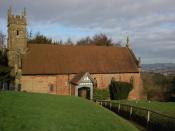In Geoffrey Chaucer'sThe Nun's Priest's Tale, human characters contrast with the animal characters. Called a beast fable, the animals in the tale take on human characteristics. Although all of the characters - the widow, Chaunticleer, Pertelote, and the fox - are all relatively human, they are far different from each other. What is especially interesting is the way Chaunticleer and Pertelote interact with each other. The two characters, though they are poultry, illustrate the comical and typical relationship of a long-married couple. Combined, all of the differences of the characters make for interesting representations and interactions.
The widow is a model of her estate. The description of her habits contrasts the simplicity of the human character with her barnyard animals' pretentiousness. Her simple life includes humble activities (tending her animals) and plain food ("slender meals" unembellished by "poignant" sauces [Line 13-14]). Her avoidance of excess food and drink contrasts with the dietary excess of which Pertelote will accuse Chaunticleer later.
Similarly, the widow's humility contrasts with Chaunticleer's haughtiness. Roosters announce the arrival of morning. Chaucer inflates his rooster by attributing to him specific knowledge of the astrological forces governing the rotation of the planets. After considering these factors, he crows.
Chaunticleer is superior in other ways to his unassuming owner. Not only is he a well-informed rooster, but he is a handsome one. Described in terms of the bright colors medieval people associated with royalty, his appearance was regal: red, black, blue, white, and gold. Besides being intelligent and handsome, he is successful in love ("among his wives all [Line 62]). He leads a comfortable life with a harem of seven hens, his primary spouse being the most colorful among them, the "fair damsel Pertelote" (Line 50). In medieval romance, the best knight gets the most beautiful woman. When Chaucer employs the romance term "damsel" to describe Pertelote, he enhances Chaunticleer's status, too. If Pertelote is a courtly lady, "courteous"ædiscreet, and debonair" (Line 51), Chaunticleer is a courtly lover, serenading her in courtly fashion with a popular love song.
Regal though they are, Chaunticleer and Pertelote interact like a typical long-married couple. One morning, Chaunticleer, lordly "among his wives"æin the hall," nonetheless is in a bad mood, "groaning in his throat" (Line 63-64, 66). His wife, hearing him, responds in good-wife fashion: "Dear heart, / What ails you, to groan in this manner?" (Line 69-70). He tells her that he has had a bad dream and tells her about it so that she may interpret it. However, as wives will, she flattens him. She mocks Chaunticleer, fearing a dream is unmanly. Women want brave men, not cowards.
In beast fables such as The Nun's Priest's Tale, animal characters take on human characteristics. Chaunticleer, a rooster, and Pertelote, a hen who is one of Chaunticleer's seven wives, behave much like a long-married couple. Their behaviors and characteristics strongly contrast those of their keeper, the widow. Chaucer uses pride as Chaunticleer's tragic flaw to give a moral lesson: pride threatens lords, not just roosters. Though they are merely barnyard birds, Chaunticleer and Pertelote serve as a vehicle to teach a lesson in The Nun's Priest's Tale.
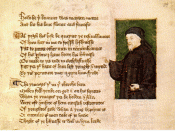
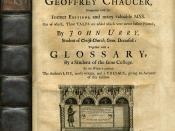
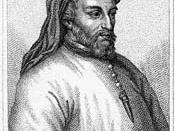
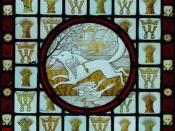
![English: St Kenelm's Spring, Clent Behind St Kenelm's church in the Clent Hills is a spring and well near where Kenelm, a Mercia king was allegedly murdered around 820AD. [673182] 'Now, take St Kenelm's life which I've been reading; He was Kenulph's son,](https://s.writework.com/uploads/0/3330/english-st-kenelm-s-spring-clent-behind-st-kenelm-s-church-c-thumb.jpg)
